Mount Hawthorn
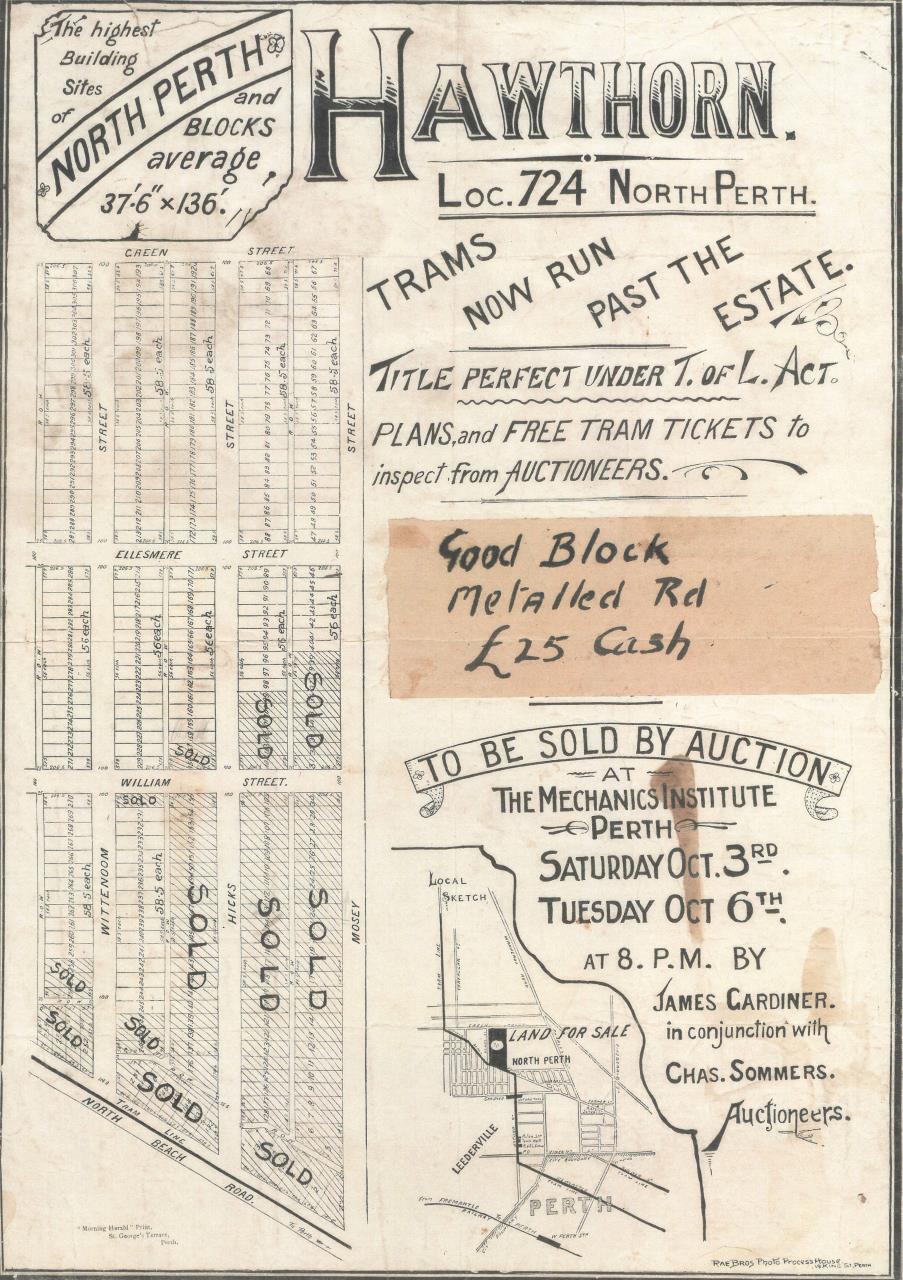
Hawthorn Estate, 1903 (SLWA 33/15/41)
Early History
For the Whadjuk Noongar people, the seasonal wetland areas north of Perth were of practical and spiritual significance. Galup, meaning 'place of fires,' was an important place to Noongar people for camping, meeting, and food gathering. It was originally much larger in size, encompassing much of the are that is now Britannia Reserve. When European colonisers settled in the area, they called the lake Triangle Lake, then Monger's Lake, and then Lake monger until 2025 when it was renamed Galup.
Land grants to European settlers in the area that became Mount Hawthorn were first made in the 1870s. However, the development of Mount Hawthorn as a residential suburb did not occur until two decades later when the gold rush of the 1890s saw the dramatic expansion of Perth.
The earliest subdivisions in the Mount Hawthorn area were made in the late 1880s and 1890s by various syndicates including the Intercolonial Investment Land & Building Company of Sydney. Mount Hawthorn subdivisions included:
Mount Hawthorn took its name from the 'Hawthorn Estate' subdivision dating from 1903. One of the investors in the syndicate, Ballarat-born land and estate agent James Hicks, explained, “I named it Hawthorn, after a visit to the suburb of Hawthorn in Victoria, because I considered that what Hawthorn was to Melbourne, our estate was to Perth.” (Trove: The West Australian, 22 September 1938)
Elevation, views and proximity to public transport and to the city were key sales features. Access to the tram network was especially important. The Number 15 Tram ran up Oxford Street and linked to the privately owned Osborne Park tram service which encouraged business and residential development close to the tram routes.
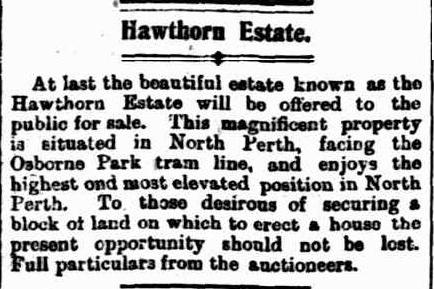
Trove: Advertisement in the Sunday Times, 7 June 1903.

No.15 Tram on Coogee Street, Mount Hawthorn 1925 (COV PH00239).
In the early 1900s, civic institutions such as schools and churches were established in the Mount Hawthorn area.
In 1906, the Hawthorn State School opened. Students were originally taught in the Congregational Mission Hall on the corner of Flinders Street and Scarborough Beach Road (today the location of the Mezz). In 1908, the school moved to its present day site on Scarborough Beach Road.
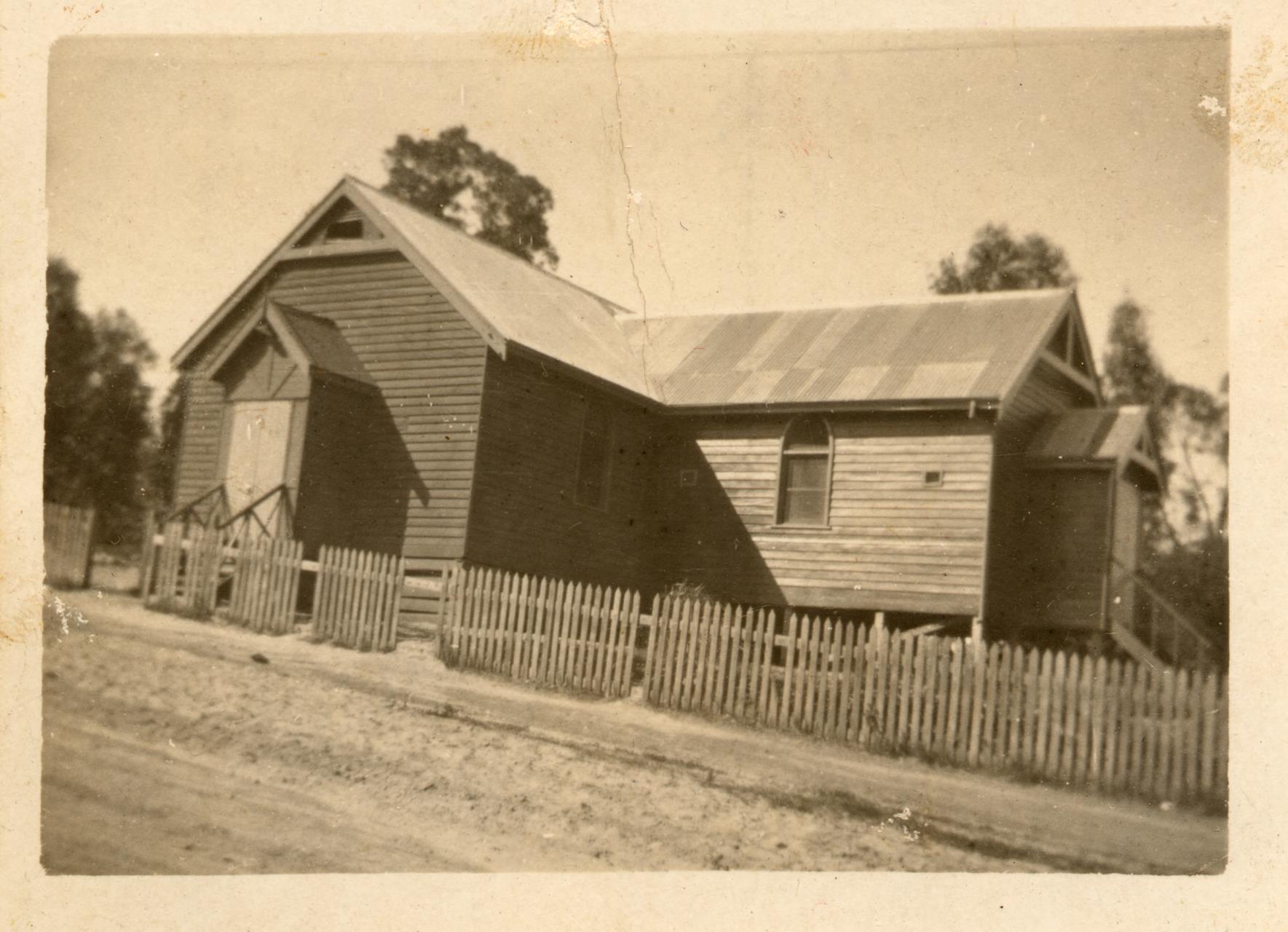
Mount Hawthorn Congregational church at Flinders & North Beach Road, c.1940s (COV PHO2521)
The first businesses along Scarborough Beach Road (called North Beach Road until 1947) appeared around 1907. By 1920, there were a variety of shops including bakers, newsagents, butchers and grocers.
From 1901 to 1914, Mount Hawthorn was part of the Municipality of North Perth. In 1904, local residents formed the Mount Hawthorn Progress Association to address local issues lobbying for the extension of the tram line beyond the Oxford Hotel and for the delivery of scheme water to the area. They also fought the North Perth Council edict that only brick homes could be built in certain areas. This rule was lifted after 1914, when North Perth was subsumed into the Perth City Council enabling more working class families to build cheaper timber homes in the area. In 1916, the Mount Hawthorn Progress Association’s greatest achievement was arranging for the construction of Anzac Cottage in Kalgoorlie Street as a memorial to the ANZAC soldiers.
Anzac Cottage

Anzac Cottage 38 Kalgoorlie Street Mount Hawthorn, 2006 (COV PHO1977)
The land on Kalgoorlie Street was donated by a local real estate agent, James Peet and the house was constructed by local volunteers, with most of the exterior structure completed in just one day (Trove: The West Australian, 5 February 1916). The building of the cottage was a notable public event. The delivery procession was watched by thousands, and met at the building site by a crowd of hundreds (Trove: Westralian Worker, 11 February 1916). The main construction attracted a crowd of 4,000 onlookers, the local streets were decorated with flags and streamers, and the Police Band provided music. A souvenir booklet was printed to mark the occasion, with descriptions of the events and the cottage, photographs, and the names of many of those involved (Anzac Cottage Souvenir Pamphlett, 1916).
On 15 April 1916, the cottage was officially opened for public inspection by Premier John Scaddan and his wife. The following day the property was handed over to Private John Porter and his wife Annie. Porter was a member of the 11th Battalion of the First Australian Imperial Force, and one of those in the landing at Anzac Cove on 25 April 1915. He was wounded on the first day; the injury subsequently causing him to returned to Australia in July 1915 as an invalid. The title deed to the property was held by the Mount Hawthorn Progress Association as trustees, with the returned soldier and his family and descendants having the right to live there, but not to sell it. Porter and his wife lived in the cottage until their deaths in the 1960s. Some of his descendants lived in the cottage until the 1970s.


Carting the building material for ANZAC Cottage, 1916 (COV PHO1004) Digging the foundations for ANZAC Cottage, 1916. (COV PH01006)
1920s - 1940s
Mount Hawthorn expanded rapidly in the 1920s and 1930s. Many war veterans, including Victoria Cross recipient Thomas Axford, settled in the area after WWI. The Plunkett building company built War Service and Workers Home Board residences in Mount Hawthorn to house returned servicemen and working families.
In the 1920s, Mount Hawthorn residents petitioned for their own police station, which opened at 52 Ellesmere Street in 1928. In the 1930s, residents also supported the establishment of a new local pub – the Mount Hawthorn Hotel - which was built in 1932 on the corner of Fairfield Street and Scarborough Beach Road. In 1924, the Mount Hawthorn Picture Gardens began screening outdoor movies at the end of Oxford Street near the tram terminus. It was not until 1938 that the Art Deco style Ritz Theatre, which seated 1200 patrons, was built on the corner of Oxford Street and Scarborough Beach Road.


Mount Hawthorn Hotel, c.1930s (COV PH01057) Scarborough Bus Service outside the Ritz Theatre, Oxford Street Mount Hawthorn, 1960 (COV PH02989)
In the inter-war period, increasingly diverse businesses sprang up along the main transport routes to service the growing number of residents. These businesses included grocers, butchers, bakers, fruiterers, hairdressers, chemists and drapers. Other industries and employers in the area included the North Perth Brick Works, a sand excavation and brick yard, which occupied a large portion of land off Scarborough Beach Road near Shakespeare Street in the 1920s. On the opposite side of Shakespeare Street was the State Timber Yard. The suburb was also home to Cartwright’s Dairy on the corner of Matlock Street and Anzac Road.

Cartwright & Sons Dairy at 11-19 Coogee Street Mount Hawthorn, c.1940s (COV PHO2348)
1950s - 1990s

Scarborough Beach Road, 1959 (SLWA b3598020_1)
After WWII, Australia’s ambitious post-war migration program increased demand for housing, with construction constrained by limited availability of building materials. Many migrants from Italy and Greece settled near family and friends in Mount Hawthorn giving their houses and businesses a European style. More war service homes were built in Mount Hawthorn, many of these were weatherboard or fibro houses mounted on jarrah stumps. More public housing was also constructed in Lynton Street, which due to shortage of materials and cost cutting measures, often did not conform to the Perth City Council's building standards.
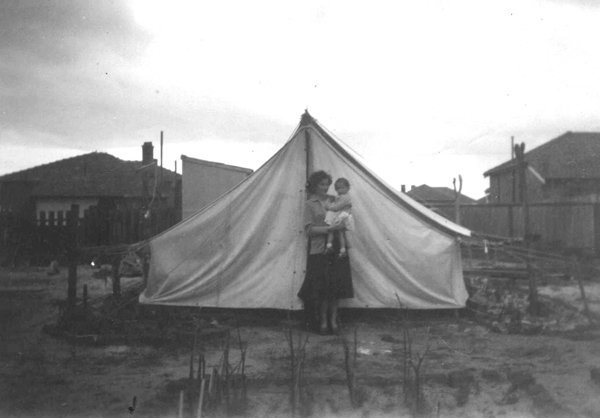
The Peake family lived in a tent on their lot while their house was being built on East Street, 1949 (COV PH00928)
In the post-war era, new civic facilities were built to cater for residents in Mount Hawthorn. A post office operated in Mount Hawthorn at the corner of Scarborough Beach Road and Egina Street from 1948 to 1955. This was replaced by a new Mount Hawthorn Post Office which opened further east along Scarborough Beach Road in 1955.
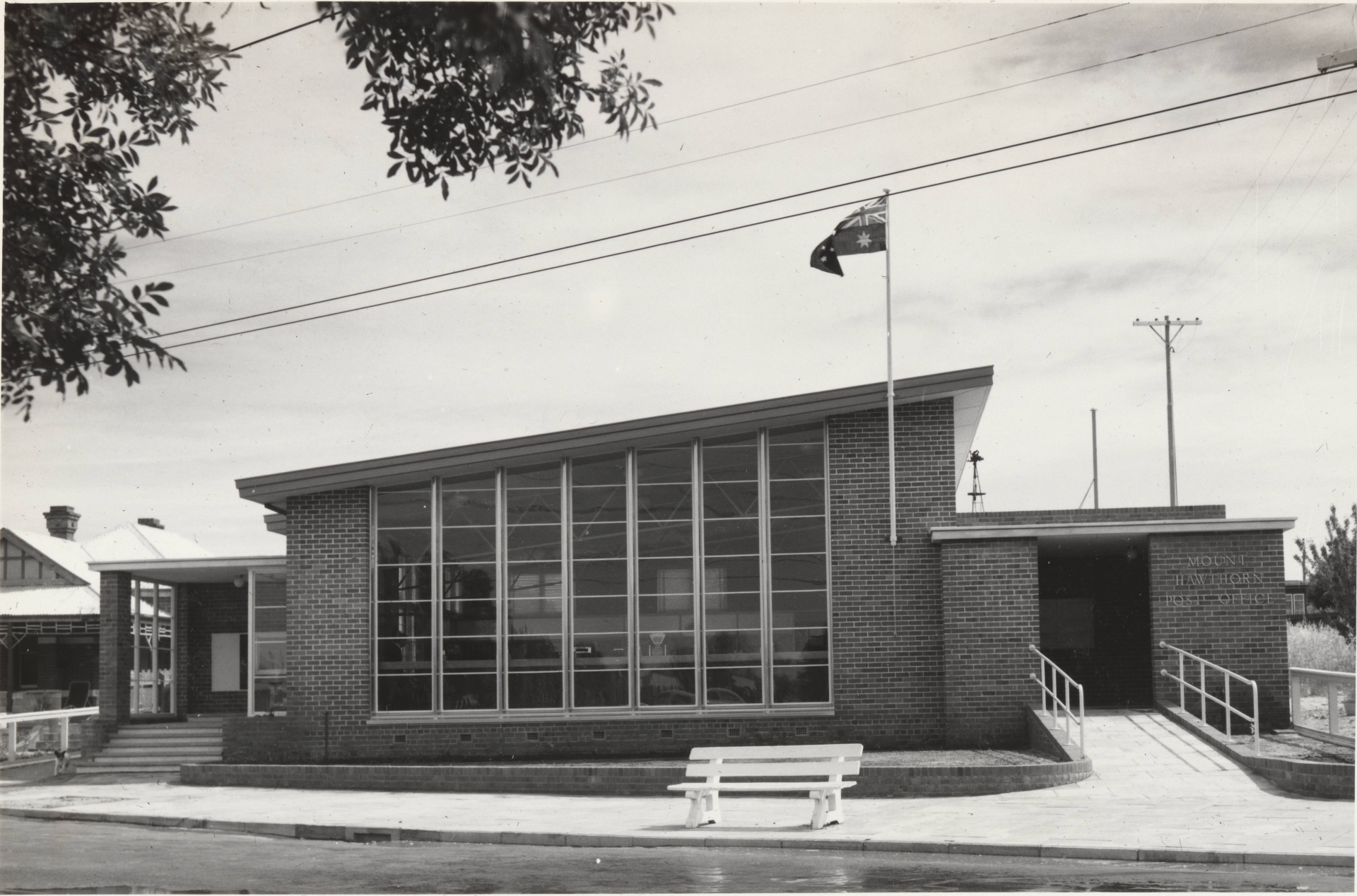
Mount Hawthorn Post Office, 1955 (SLWA BA1289/112)
In 1958, the foundation stone was laid for the Mount Hawthorn Boy Scouts Headquarters on the corner of East and Berryman streets. (The hall was demolished in 2005) .

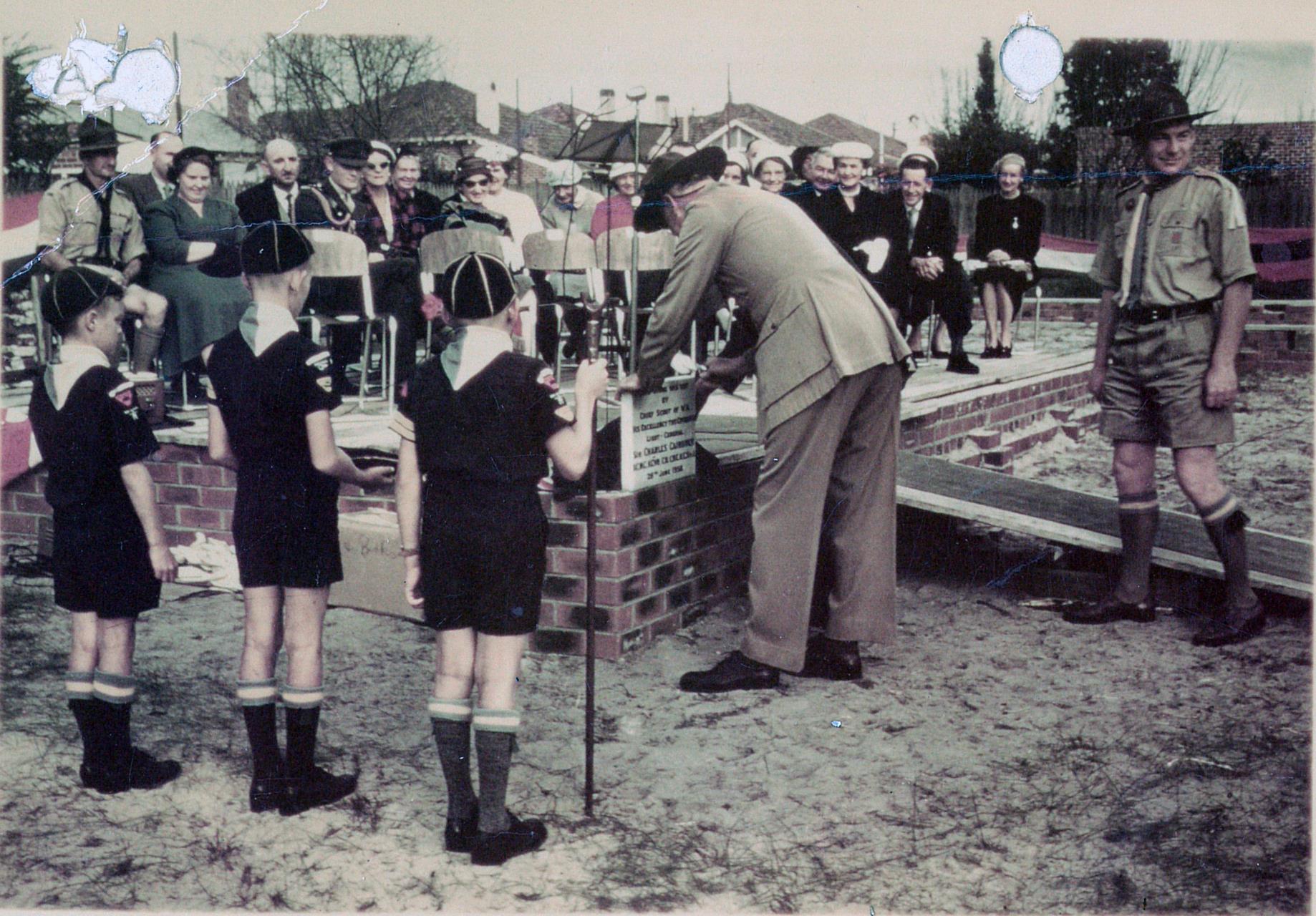
Mount Hawthorn Scout Hall, East & Berryman streets, 1959 (COV PHO5843) Laying the foundation stone for the Mount Hawthorn Scout Hall, 1958 (COV PH05842)
In 1959, the old Perth City Council depot site in Britannia Road, which had been a stable for night cart horses, was used to build a Velodrome for the 1962 British Empire and Commonwealth Games. In 1962, the Mount Hawthorn Community Centre also opened opposite the Mount Hawthorn Primary School in Braithwaite Park.

Mount Hawthorn Community Centre, 1968 (COV PHO1349)

Lake Monger Velodrome, 1963 (COV PHO0895)
In May 1965, the City of Perth opened a public library at 392 Oxford Street, Mount Hawthorn.


Mount Hawthorn Library at 392 Oxford Street, 1965 (COV PHO1348) Interior of Mount Hawthorn Library, 1965 (COV PHO1231)
In the 1960s, Mount Hawthorn was at the forefront of changing retail culture with the development of John Allans shopping arcade on the corner of Flinders Street and Scarborough Beach Road. John Allans department store and a few specialty shops were located on the ground floor, whilst ‘Tom the Cheap’ supermarket occupied the top level, which also featured parking, at the time an innovation for an increasingly car-oriented consumer culture.
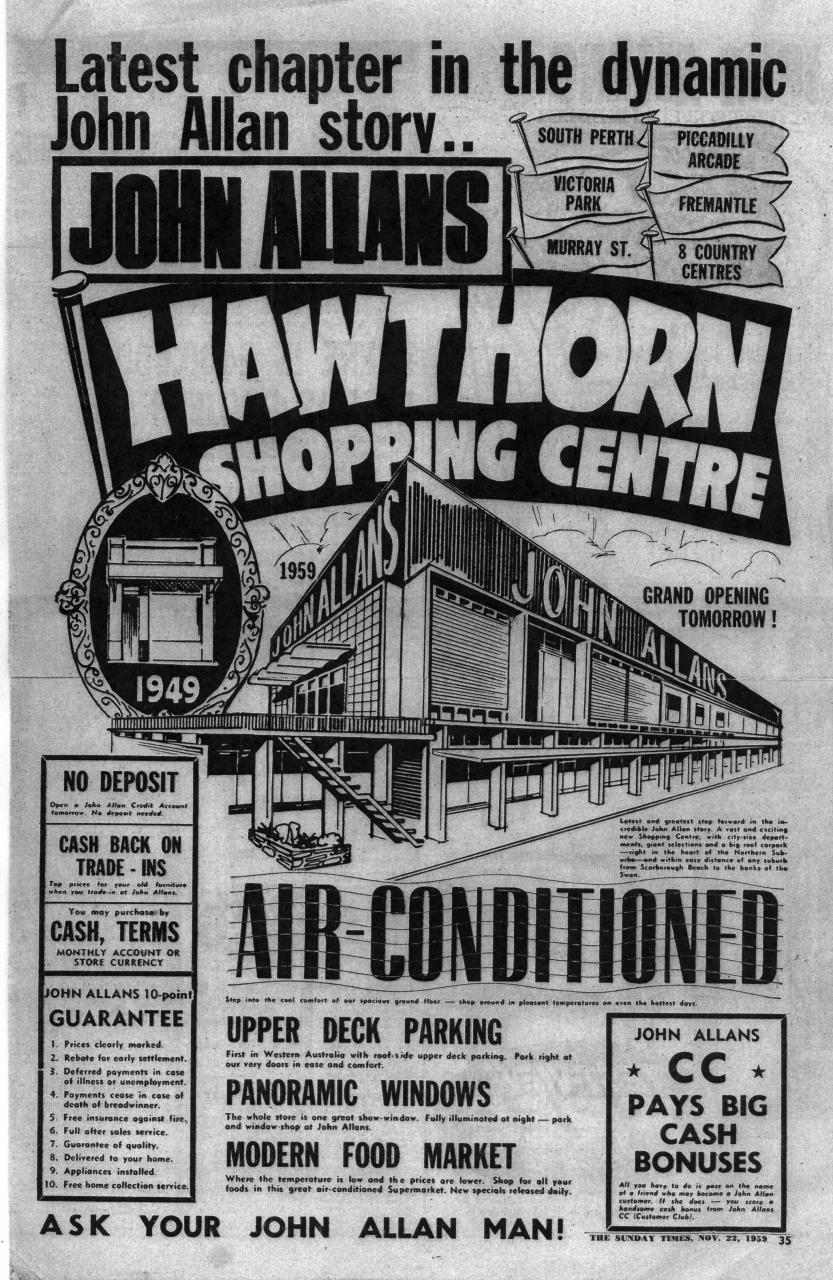
Advertisement for John Allans store in The Sunday Times, November 22, 1959.
Later in the 1980s, the Murdoch Group bought the Mount Hawthorn shopping complex and renamed it the Mount Hawthorn Plaza. In 1987, the Mount Hawthorn Hotel also underwent renovations and was renamed The Paddington Ale House. For decades, the ‘Paddo’ was a popular local pub and live music venue with a regular line up of local and interstate bands. In 1994, Mount Hawthorn became part of the Town of Vincent. In the late 1990s, the precinct group ‘Mount Hawthorn on the Rise’ formed to help revitalize the suburb.

Mount Hawthorn Plaza (left) on Scarborough Beach Road, 1980s (COV PH01172)
2000s and beyond
The 2000s saw further changes in Mount Hawthorn, including redevelopment of the Mezz shopping centre in 2010.
In 2022, Mount Hawthorn was home to around 8,500 residents, a population increase of more than a third since 2001. Almost two thirds of residents are Australian-born, with the UK, Italy and New Zealand the next most common birthplaces. There are 3,000 dwellings in Mount Hawthorn, 80 percent of which are houses. As of August 2023, the median house price was $1.23 million (REIWA Insights). Compared to other suburbs in Vincent, Mount Hawthorn also has a higher proportion of babies, children and young people, making it the most family oriented of Vincent’s suburbs (Mount Hawthorn Profile ID ABS ERP).
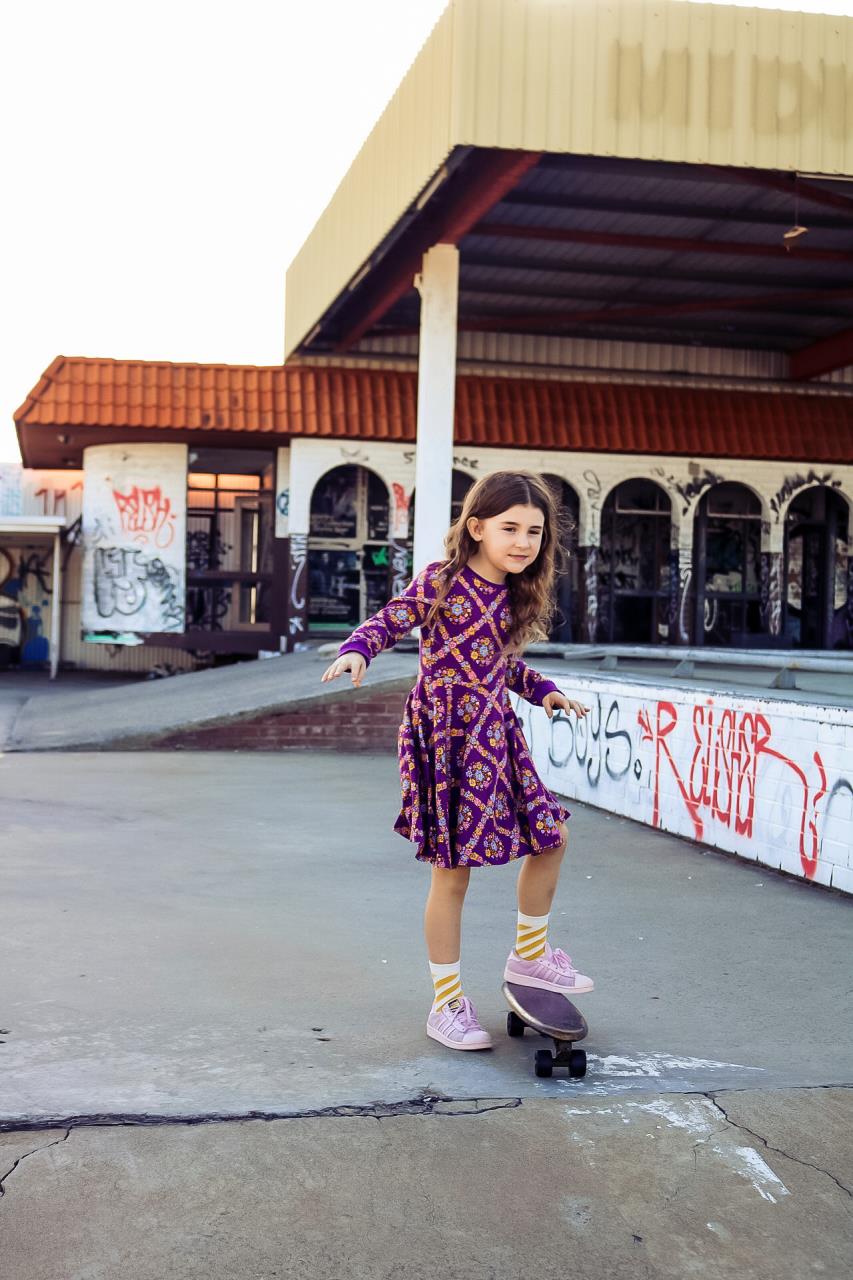
Young skateboarder on Oxford Street, Mount Hawthorn, 2019 (COV PH05863)
For more great photos of Mount Hawthorn visit the Local History Image Gallery: Mount Hawthorn History Album
If you have any further information or photographs of Mount Hawthorn please contact us at local.history@vincent.wa.gov.au